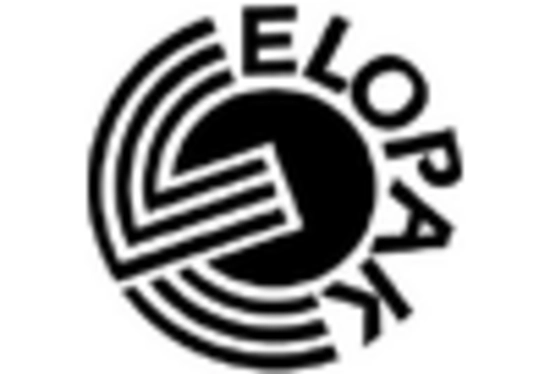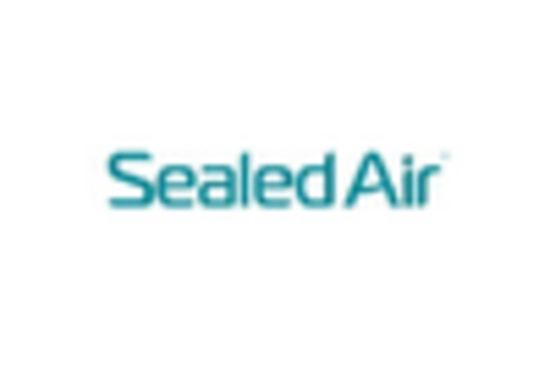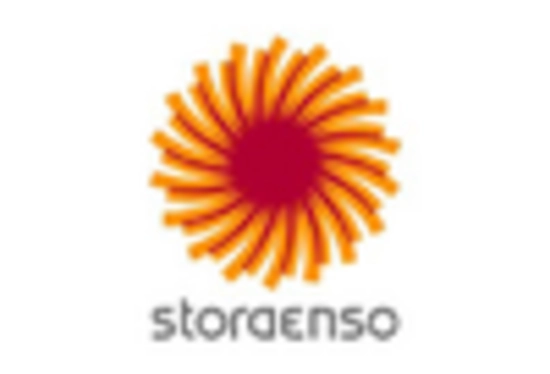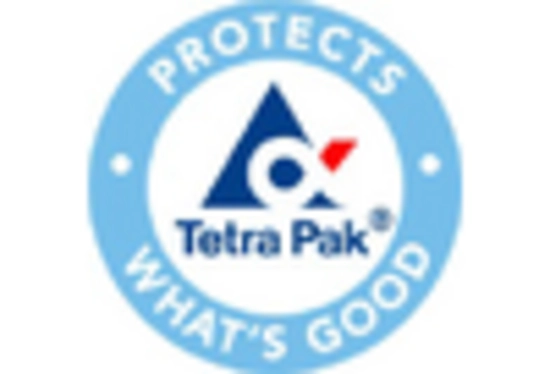Market Analysis
Aseptic Packaging Market (Global, 2024)
Introduction
The aseptic packaging market will play an important role in the food and beverage industry, driven by the increasing demand for longer shelf life and improved food safety. The health-conscious and environmentally aware consumers are more demanding for the packaging that preserves the integrity of the product and minimizes waste. The aseptic packaging process, which involves the sterilization of the product and the packaging separately before filling, offers a unique solution to prevent microbial contamination and extend the shelf life of perishable products. This innovative approach not only meets the needs of consumers but also helps manufacturers meet their sustainability goals as it often uses materials that are either re-usable or made from renewable resources. As the market continues to evolve, further improvements in technology and materials will enhance the efficiency and effectiveness of aseptic packaging, which will further make it an essential component of the supply chain for several sectors, such as dairy, juices, sauces, and ready-to-eat meals.
PESTLE Analysis
- Political
- By 2024, the regulatory framework for the aseptic packaging market will be heavily influenced by government policies in the areas of food safety and the environment. The European Union has imposed a directive stipulating that by 2024, 50% of all packaging materials must be reused or recycled. This directive will have an effect on aseptic packaging manufacturers’ production processes, pushing them to innovate and adopt sustainable materials. In addition, the U.S. Food and Drug Administration (FDA) has increased its scrutiny of food packaging safety, conducting more than 200 inspections in 2023 alone, which will increase the compliance requirements for aseptic packaging manufacturers.
- Economic
- The general economic environment in 2024 is characterized by a swaying of raw material prices, which directly influence the aseptic packaging market. In the case of polyethylene, for example, the price has risen by about 15 % since 2023, due to disruptions in the supply and higher demand. In addition, the projected average rate of inflation worldwide is expected to be 3.5%, which will have an effect on the purchasing power of consumers and thus on the demand for packaged products. Under these conditions, the aseptic packaging industry will have to adopt new strategies to maintain its profit and remain competitive.
- Social
- In the aseptic packaging market, the trend towards healthier and more sustainable food products will continue to drive the aseptic packaging market. In early 2024, a survey revealed that 68% of consumers are willing to pay up to 10 percent more for products packed in sustainable materials. This trend is pushing the development of sustainable packaging solutions, such as bioplastics and recyclability. The growth of e-commerce has also led to a growing demand for aseptic packaging solutions to ensure product safety and shelf life during transportation, as grocery e-commerce is expected to reach $100 billion in the US by 2024.
- Technological
- Aseptic packaging is a field where technological developments are proving decisive, especially in the area of increasing the efficiency of production and the safety of the products. The forecast is that automation and smart packaging will be increasingly used on aseptic lines in 2024, with around 30% of aseptic lines having intelligent quality control systems. These systems help to detect defects and ensure that quality and safety standards are met, thus reducing waste and improving the quality of the end product. Also, innovations in the area of sterilization, such as the use of uv light, are gaining ground, with a reported increase of around 25% in the use of these methods in aseptic packaging over the last year.
- Legal
- The legal framework for the aseptic packaging market is becoming increasingly strict, particularly with regard to food safety regulations. In 2024 the Food and Drug Administration proposed a new guideline, which stipulates that all food containers undergo a strict test for chemical migration by mid-year 2025. This will affect about 40 percent of existing products and will require manufacturers to invest in compliance and testing measures. Intellectual property rights are becoming more important, and over the past year patent applications for new packaging materials have increased by 15 percent.
- Environmental
- The market for aseptic packages in 2024 will be dominated by the environment. It will focus on reducing the carbon footprint and waste. The worldwide trend towards sustainability will result in an increase of biodegradable materials in packaging by 20 percent. The introduction of extended producer responsibility (EPR) in some regions will force producers to take responsibility for the whole life cycle of their packages, including the management of post-consumer waste. Accordingly, companies will increase their investments in sustainable sourcing and recycling. By 2025, a third of the companies in the industry will have committed to zero waste.
Porter's Five Forces
- Threat of New Entrants
- The aseptic packaging market is moderately protected because of the high cost of technology and equipment. The established companies also benefit from economies of scale and brand loyalty, which prevents new entrants. However, the advancement of technology and the increasing demand for sustainable packaging solutions could stimulate new entrants to enter the market.
- Bargaining Power of Suppliers
- The bargaining power of suppliers in the aseptic packaging market is relatively low. There are numerous suppliers of raw materials such as plastics, aluminum, and paperboard, which leads to a competitive supply environment. Suppliers can easily be changed by the producers, which lowers the power of a single supplier.
- Bargaining Power of Buyers
- The buyers of aseptic containers, especially the large food and beverage companies, have considerable bargaining power. They often buy in large quantities and, because of their size, can negotiate advantageous terms. Also, they have a choice of packaging materials, and they can easily switch to competitors if their needs are not met.
- Threat of Substitutes
- The threat of substitutes on the aseptic packaging market is moderate. There are other types of packaging, such as glass and metal containers, but the advantages of aseptic packaging, such as longer shelf life and fewer preservatives, make it the preferred choice for many products. As consumers become more demanding, however, the threat of substitutes may increase.
- Competitive Rivalry
- Competition is fierce in the aseptic packaging industry, where there are many players competing for market share. To differentiate their offerings, companies are constantly improving and innovating their products. The presence of well-known brands and the rapid growth of the market have intensified competition, which has led to price wars and a rise in marketing expenditure.
SWOT Analysis
Strengths
- Extended shelf life of products, reducing food waste.
- Increased consumer demand for safe and hygienic packaging solutions.
- Technological advancements improving efficiency and reducing costs.
Weaknesses
- High initial investment costs for aseptic packaging technology.
- Limited recycling options for certain types of aseptic packaging materials.
- Potential consumer perception issues regarding the use of preservatives.
Opportunities
- Growing demand for ready-to-eat meals and convenience foods.
- Expansion into emerging markets with rising disposable incomes.
- Innovations in sustainable materials and eco-friendly packaging solutions.
Threats
- Intense competition from traditional packaging methods.
- Regulatory challenges and compliance requirements in different regions.
- Economic fluctuations affecting consumer spending on packaged goods.
Summary
Aseptic packaging is characterized by the ability to extend the shelf life of the product and satisfy the demand for safety. It is a high-cost, limited-recycling market. Opportunities are the growing demand for convenient food and sustainable innovations, while threats are competition from traditional packaging and regulations. Companies should focus on their strengths and opportunities to achieve success.

















Leave a Comment